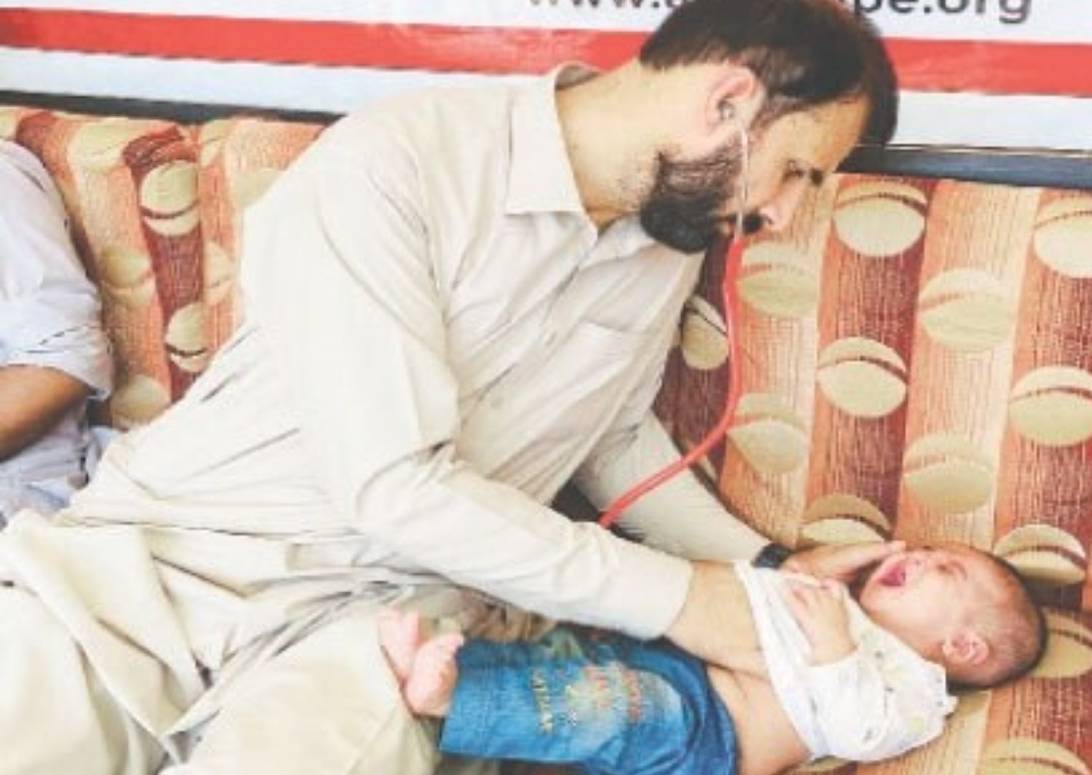SWAT and BUNER, Pakistan – As the devastating floods that ravaged Khyber Pakhtunkhwa in mid-August recede, a new and alarming threat is gripping the region: a rapid surge in waterborne and communicable diseases, raising fears of a full-scale public health emergency.
Health authorities have reported a sharp increase in acute watery diarrhoea (AWD), acute respiratory infections (ARI), and a host of skin and gastrointestinal illnesses, particularly among children under five. With drinking water sources contaminated and sanitation systems severely damaged, officials warn the crisis could spiral if immediate and coordinated interventions are not maintained.
Initial figures confirm more than 380 cases of infectious diseases in Swat and Buner, along with Shangla, Battagram, and nearby flood-affected districts, signaling an urgent call for action from provincial and federal agencies.
Emergency Measures Underway
The provincial health department, working alongside WHO, UNICEF, and local NGOs, has mobilized emergency medical teams to the worst-hit areas. According to the Directorate General of Health Services, specialized health cluster coordination units are ensuring rapid deployment of medicines, diagnostic kits, and sanitation resources.
Mobile health units and temporary medical camps have been established to serve displaced families, providing essential treatments such as oral rehydration solutions, antibiotics, and basic first aid. Health workers are also conducting awareness sessions to guide residents on safe hygiene practices to prevent the further spread of disease.
Voices From the Ground
Local communities, already devastated by the floods, now fear for their survival as illnesses spread unchecked. “We survived the floods, but now we fear for our children’s lives,” said a resident from Mingora, highlighting the dire need for clean water and sustained aid.
Health experts are calling the current situation a “disaster within a disaster”, warning that outbreaks of cholera, typhoid, and malaria are highly likely in the coming weeks without urgent preventive measures.
Lessons From the Past
Pakistan has witnessed similar crises during previous monsoon disasters, where poor sanitation and stagnant water triggered health emergencies nationwide. Experts emphasize that global patterns show post-flood environments are breeding grounds for waterborne pathogens and vector-borne diseases, disproportionately affecting vulnerable populations such as children, the elderly, and the displaced.
Urgent Call for Action
Medical professionals stress the need for long-term surveillance systems, continuous supply chains of medicines, and community-level education programs. Without a sustained and coordinated effort, health officials fear the healthcare infrastructure in Khyber Pakhtunkhwa could face unprecedented strain in the weeks ahead.
This story has been reported by PakTribune. All rights reserved.



